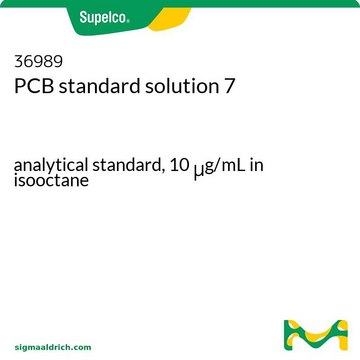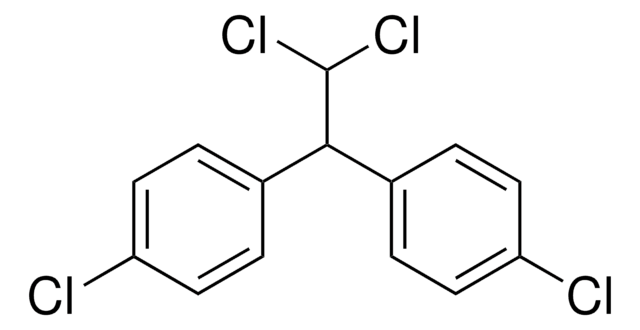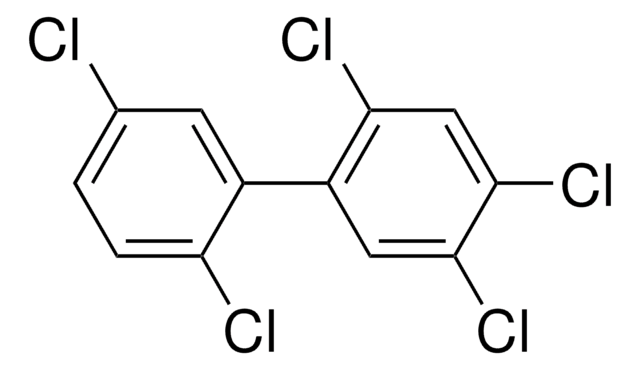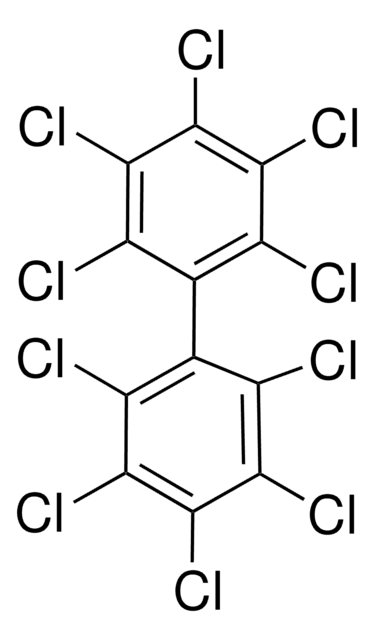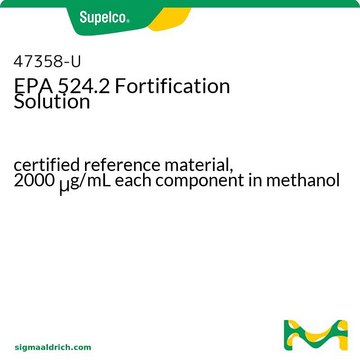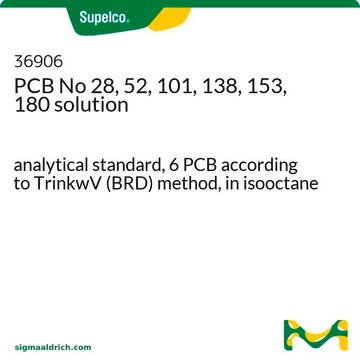おすすめの製品
グレード
certified reference material
認証
BCR®
メーカー/製品名
JRC
アプリケーション
pharmaceutical (small molecule)
フォーマット
neat
保管温度
2-8°C
SMILES記法
Clc1cc(Cl)c(cc1Cl)-c2cc(Cl)c(Cl)c(Cl)c2Cl
InChI
1S/C12H3Cl7/c13-6-3-8(15)7(14)1-4(6)5-2-9(16)11(18)12(19)10(5)17/h1-3H
InChI Key
WBHQEUPUMONIKF-UHFFFAOYSA-N
類似した製品をお探しですか? 訪問 製品比較ガイド
アナリシスノート
For more information please see:
BCR298
BCR298
法的情報
BCR is a registered trademark of European Commission
シグナルワード
Warning
危険有害性情報
危険有害性の分類
Aquatic Acute 1 - Aquatic Chronic 1 - STOT RE 2
保管分類コード
11 - Combustible Solids
WGK
WGK 3
引火点(°F)
Not applicable
引火点(℃)
Not applicable
個人用保護具 (PPE)
Eyeshields, Gloves
適用法令
試験研究用途を考慮した関連法令を主に挙げております。化学物質以外については、一部の情報のみ提供しています。 製品を安全かつ合法的に使用することは、使用者の義務です。最新情報により修正される場合があります。WEBの反映には時間を要することがあるため、適宜SDSをご参照ください。
PRTR
特定第一種指定化学物質
労働安全衛生法名称等を表示すべき危険物及び有害物
名称等を表示すべき危険物及び有害物
労働安全衛生法名称等を通知すべき危険物及び有害物
名称等を通知すべき危険物及び有害物
Jan Code
BCR298-25MG:
最新バージョンのいずれかを選択してください:
Roshan Tofighi et al.
Toxicological sciences : an official journal of the Society of Toxicology, 124(1), 192-201 (2011-09-13)
Developmental exposure to food contaminants, such as polychlorinated biphenyls (PCBs), has been considered as a possible cause of neurodevelopmental disorders. We have investigated the effects of noncytotoxic concentrations of PCBs 153 and 180 on spontaneous differentiation of rat embryonic neural
Johan Maervoet et al.
Environmental toxicology and chemistry, 24(3), 597-602 (2005-03-23)
Fertilized chicken eggs were injected with high doses of individual polychlorinated biphenyl (PCB) congeners (0.5 microg of PCB 77, 9.8 microg of PCB 153, or 10.9 microg of PCB 180) before incubation to investigate the structure-specific uptake of these compounds
Elsa C Antunes-Fernandes et al.
Toxicology letters, 206(2), 158-165 (2011-07-26)
Traditional risk assessment of potential endocrine-disruptive pollutants, including PCBs, focus mainly on the effects of parent compounds. Still, biotransformation results in systemic exposure to PCBs and their bioactive metabolites. In the present paper, the effects of twenty ultra-pure non-dioxin-like (NDL)
Robert Roos et al.
Toxicology, 284(1-3), 42-53 (2011-04-05)
PCB 180 (2,2',3,4,4',5,5'-heptachlorobiphenyl) is a persistent and accumulating polychlorinated biphenyl abundantly present in food and the environment. In this study, we used highly purified PCB 180 (dioxinlike impurities: 2.7 ng TEQ(WHO)/g PCB 180) in a 28-day toxicity study in young
Joanne S Colt et al.
Blood, 113(9), 1899-1905 (2008-12-11)
Organochlorine exposure was linked to non-Hodgkin lymphoma (NHL) risk. To determine whether this relation is modified by immune gene variation, we genotyped 61 polymorphisms in 36 immune genes in 1172 NHL cases and 982 controls from the National Cancer Institute-Surveillance
ライフサイエンス、有機合成、材料科学、クロマトグラフィー、分析など、あらゆる分野の研究に経験のあるメンバーがおります。.
製品に関するお問い合わせはこちら(テクニカルサービス)

